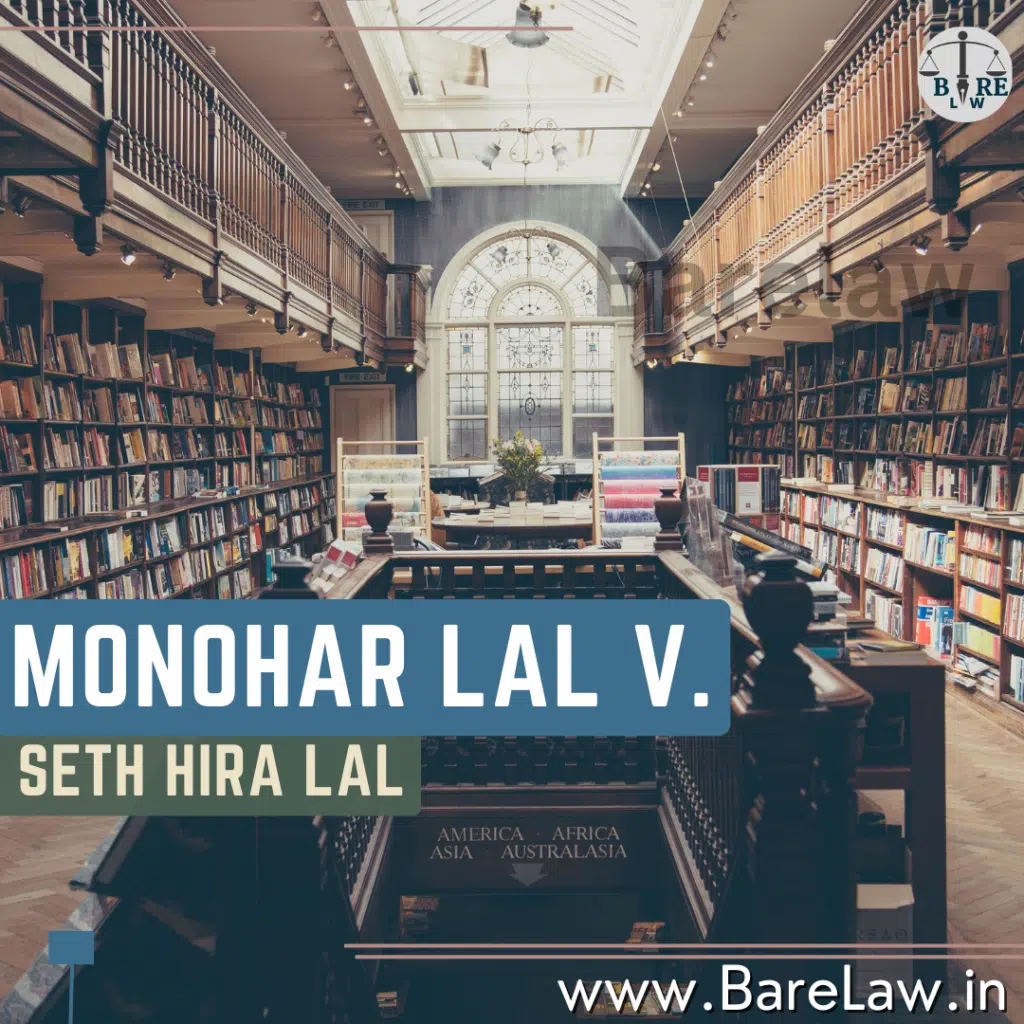
The case of Monohar Lal v. Seth Hira Lal, AIR 1962 SC 527 | BareLaw
Monohar Lal v. Seth Hira Lal, AIR 1962 SC 527 is a landmark judgment in the Indian legal system regarding the interpretation of CPC. This case revolves around the inherent powers of the High Court and issuance of interim injunctions under CPC.
Background
The background originates from the dispute between partners. Monohar Lal and Seth Hira Lal formed a partnership for coal mining and cement manufacturing in Indore which was later dissolved. Then Monohar Lal filed a suit in Asansol Court for recovery of his share in partnership’s capital and assets with interest or damages for wrongful withholding payment. In response to this petition, Seth Hira Lal filed an arbitration petition under Arbitration & Conciliation Act before Calcutta High Court seeking stay of suit on ground of arbitration agreement contained in partnership deed.The writ petition was rejected. Later Seth Hira Lal filed a civil suit at Indore court invoking section 10 and 151 CPC alleging that there was an interim order restraining him from proceeding with his suit against Monohar Lal at Asansol.
Issues and Observation by Supreme Court
The relevant issues were whether specific provisions regarding issuance of interim injunctions do not apply to cases where the High Court exercises its inherent powers under Section 151 C.P.C., and if it did so correctly here.
The court observed that no provision of CPC should be taken to limit or otherwise affect the inherent power of making orders necessary for meeting ends of justice .It said that it does not derive these powers from any source excepting its judicial role as a mediator among disputants before it, adding that they are only exercised under very rare circumstances where code has not provided procedure.
Conclusion
It was concluded by Supreme Court that when there is a specific provision i.e., Order XXXIX providing temporary injunction, court cannot exercise its inherent powers under Section 151 C.P.C to order an injunction .This judgement underscores strict compliance of provisions of the CPC while acknowledging the existence of inherent powers of the court. The ruling therefore illustrates this Court’s attitude towards reconciling the procedural mandates of CC with its inherent powers in India.
Significance
The significance of this case is to clarify the limits to which court’s inherent power under CPC can go. It sets out that courts have some inherent powers with respect to justice, but their exercise should be restricted and very remarkable circumstances exist given that CPC already provides for specific procedures. This judgment therefore contributes to knowledge about striking a balance between procedural dictates contained in CPC on one hand and inherent judicial powers on other hand in India.



